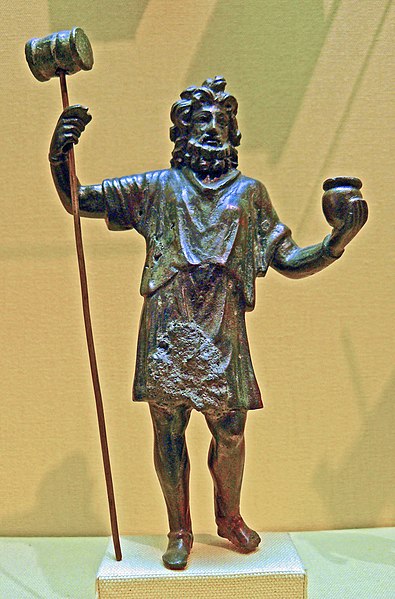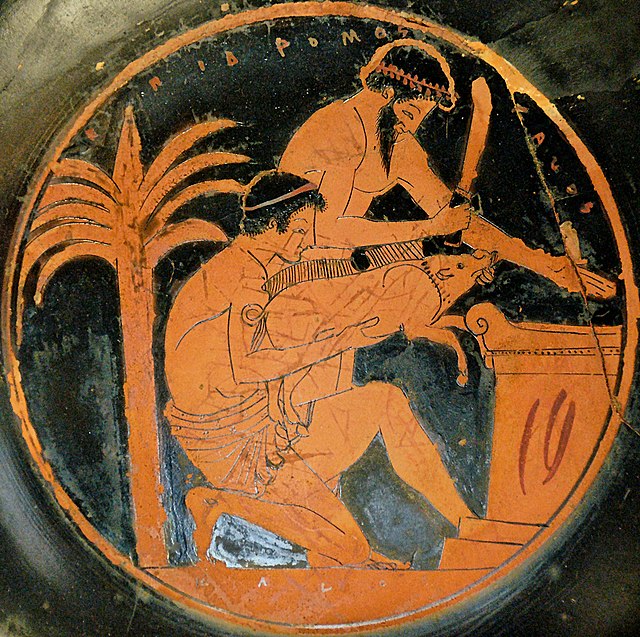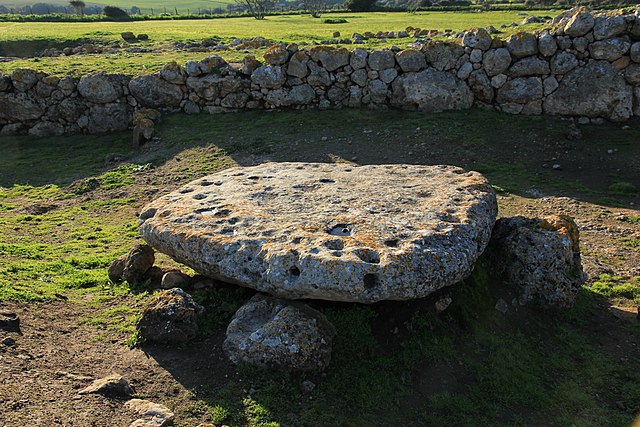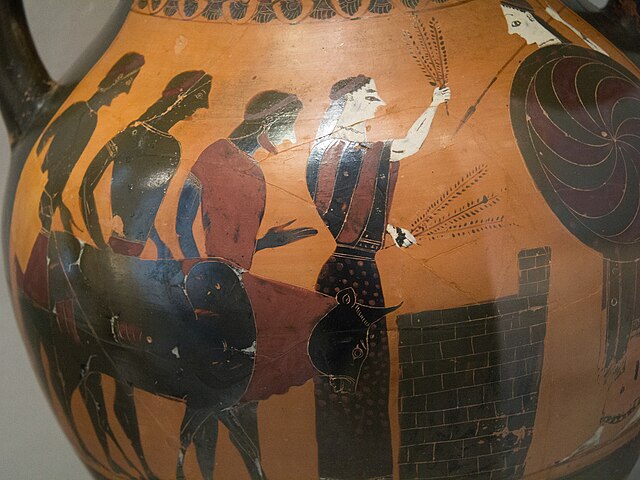In ancient Roman culture, the olla is a squat, rounded pot or jar. An olla would be used primarily to cook or store food, hence the word "olla" is still used in some Romance languages for either a cooking pot or a dish in the sense of cuisine. In the typology of ancient Roman pottery, the olla is a vessel distinguished by its rounded "belly", typically with no or small handles or at times with volutes at the lip, and made within a Roman sphere of influence; the term olla may also be used for Etruscan and Gallic examples, or Greek pottery found in an Italian setting.
An olla appears in the right hand of the Gallo-Roman mallet god; the shape of the fragment suggests that the pot itself might have been an olla
Ollae of varying shapes in a reconstruction of a Roman kitchen; top shelf, and on the rack over the fire
Gallic mallet god with olla, perhaps Sucellus
Animal sacrifice is the ritual killing and offering of one or more animals, usually as part of a religious ritual or to appease or maintain favour with a deity. Animal sacrifices were common throughout Europe and the Ancient Near East until the spread of Christianity in Late Antiquity, and continue in some cultures or religions today. Human sacrifice, where it existed, was always much rarer.
Sacrifice of a pig in ancient Greece (tondo from an Attic red-figure cup, 510–500 BCE, by the Epidromos Painter, collections of the Louvre)
One of the altars at the Monte d'Accoddi in Sardinia, where animal sacrifice may have occurred.
A bull is led to the altar of Athena, whose image is at right. Vase, c. 545 BCE.
Sacrifice of a lamb on a Pitsa Panel, Corinth, 540–530 BCE







